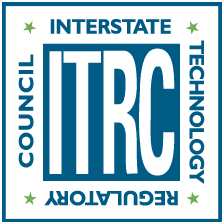This technology overview summarizes the concepts underlying mass discharge and flux, their potential applications, and case studies of the uses of these metrics. Review of the case studies showed that mass discharge and flux estimates have been useful for several site management objectives and that evaluating mass flux and discharge can improve CSMs and lead to more efficient remediation. Specific findings from the case study review include the following:
- Mass discharge and flux data have improved decision making. For example, they have been used to trigger transition between technologies.
- Mass discharge and flux data have reduced remediation costs. For example, mass flux estimates have been used to identify high-priority layers in stratified aquifers, leading to more cost-effective cleanup.
- Mass discharge and flux data have been used to prioritize sites. For example, responsible parties have used mass discharge estimates to identify the sites needing further characterization and remediation within regional flow systems impacted by multiple sources.
- Mass discharge and flux data have been used to predict remediation performance. Mass discharge, high-resolution mapping, and available analytical tools have provided the basis for estimation of natural attenuation rates, plume responses to source treatment, and remediation time frames.
- Transect testing has been by far the most common method used, and transects have proven useful for site management. Use of well transects has provided more credible estimates of natural attenuation rates than the more typical practice of relying on a line of wells along a flow path because transect data are less susceptible to temporal variations in flow direction and strength
- Mass flux and discharge estimates can estimate exposure. Other uses of mass flux and mass discharge data include risk assessment, particularly when evaluating risks to potential downgradient receptors or when assessing the risks of vapor intrusion into buildings located above contaminated groundwater. In many cases, this information is used in the underlying models, but its importance is not recognized, and the estimates may be highly uncertain.
Key conclusions from this overview of mass flux and mass discharge include the following:
- Mass discharge and flux estimates have proven valuable for contaminated site management and should be used more frequently.
- Use will increase rapidly as the benefits of flux and discharge information are more widely recognized.
- A specific estimation method may be better suited to specific site conditions and objectives, so it is important to consider the advantages and limitations of the methods available.
- Useful mass discharge and flux estimates often can be developed from existing site data and/or limited site sampling, often for relatively little cost.
- All methods of mass flux and discharge estimation involve uncertainty that should be recognized and quantified, to the extent practicable, when considering use of the parameters. However, concentration-only data may have similar, or greater, uncertainty.
- Strategies to manage uncertainty include precharacterization and sampling in stages.
- Mass discharge can also have an important role in regulatory decisions and may have advantages over concentration data for some purposes. Examples include deciding when to shift from aggressive treatments to natural attenuation, evaluating DNAPL source remediation efforts, or even for determining when no further action is required at a site.
Click Here to download the entire document.


